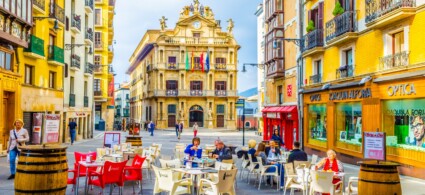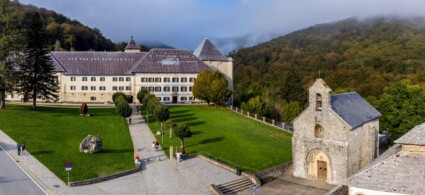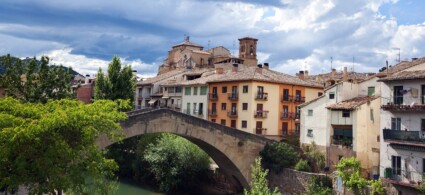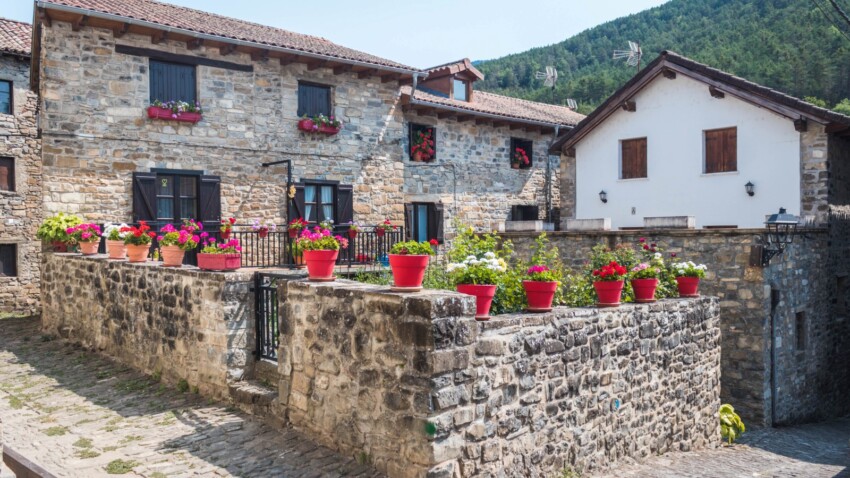

Navarre is one of the most visited regions in Spain… but only from 6 to 14 July! On those days the world-famous traditional San Fermin festival is held, during which bulls are set loose in the streets of the city of Pamplona and intrepid runners perform the risky feat of reaching the end of the route before being gored.
At other times of the year, Navarre is travelled by pilgrims and hikers at the start of their journey to Santiago de Compostela. Otherwise, few tourists venture here.
Those who do discover an astonishing variety of landscapes concentrated in an area of just over 10,000 square metres: the snow-capped peaks of the Pyrenees, evergreen valleys, arid expanses, gentle hills, gorges, caves and lakes can all be reached on a day trip.
This unexpected diversity and the magnificent contrasts of the landscapes win the hearts of all visitors, but Navarre will also know how to tempt you with its many local specialities made from the very different ingredients that grow on its land.
Proud of its traditions and special culture with strong links to the Basque Country and the French region of Aquitaine, Navarre is also a highly dynamic region. It is one of the richest in the country and one of those that invests most in innovation, particularly in the field of renewable energy.
Romance, liveliness, natural beauty, epic tales, legendary fiestas, optimism, pride: the region of Navarre that enchanted Hemingway will enchant you too.
The small region of Navarre is a concentration of Spain in just 10,000 square kilometres. Places of interest include a lively city with a rich gastronomic tradition, picturesque villages, medieval castles, evocative monasteries, green hills, high mountains, caves, gorges and lakes. It only lacks beaches to be able to say it has it all!
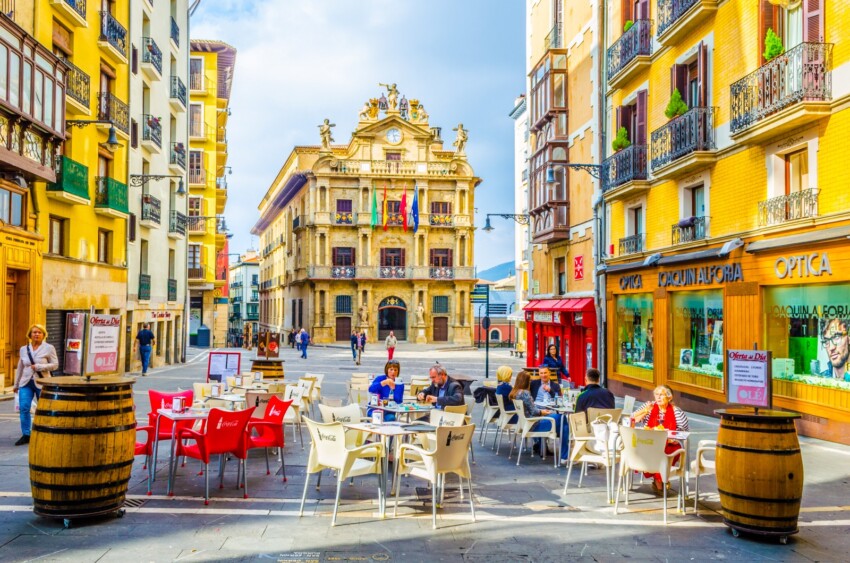
The city of the famous running of the bulls is a fascinating place to visit after the festive lights have gone out and the white suits and red handkerchiefs have been put away in the cupboards. It is nice to have the cobbled streets of the centre of Pamplona, steeped in history and romance, all to yourself and to be able to admire the architectural treasures enclosed within its 16th-century walls without the crowds of tourists.
Attractions not to be missed in Pamplona include the Cathedral, the Museum of Navarre, the Chamber of Comptos and the Ciudadela Park.
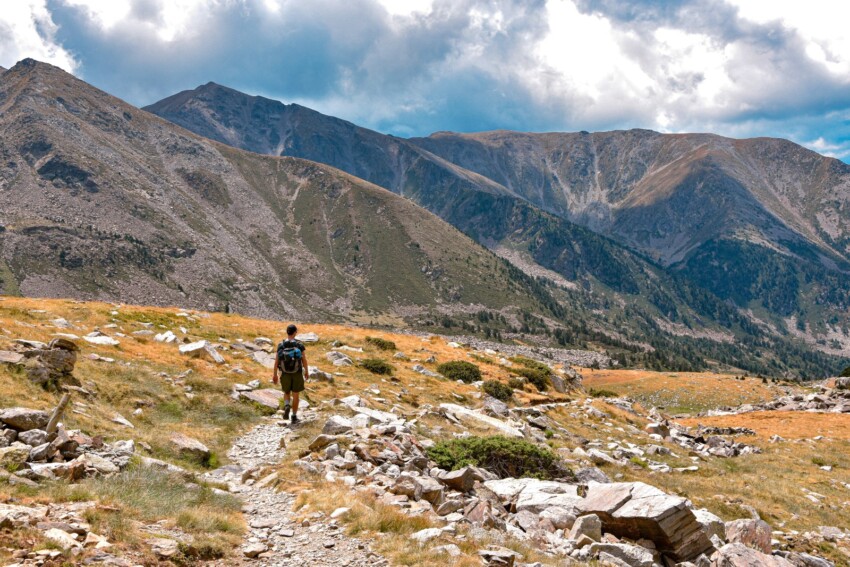
The Pyrenees of Navarre are among the least explored mountains in Europe and this adds to their charm. If you love silence interrupted only by the sounds of nature, this is the ideal destination for you: travel at a slow pace, possibly on foot, to discover tiny towns and picturesque villages with a unique atmosphere that mixes Basque, Spanish and French elements.
La Cave of Zugarramurdi2 and Selva de Irati3 are two natural wonders not to be missed, while the original Museo de las Brujas will introduce you to the magical and mysterious world of Pyrenean witches.
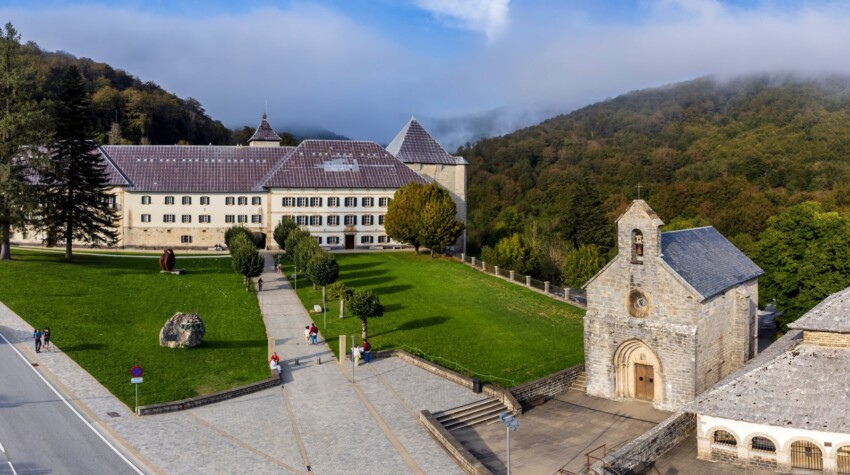
Among the Pyrenean towns, Roncesvalles deserves a special place, a place of epic proportions where Charlemagne was defeated and his leader Roland killed by the Basques and a fundamental stop on the Camino de Santiago with profound symbolic meaning.
The architectural jewel of Roncesvalles is the 13th century Gothic church Real Colegiata de Santa Maria; inside, look for the modernist detail by Frank Gehry, the contemporary architect who designed the famous Guggenheim Museum in Bilbao.
The church is part of a monastic complex that includes other buildings of interest and a cloister where, according to legend, King Sancho VII of Navarre, known as El Fuerte and said to be 2.25 metres tall, rests.
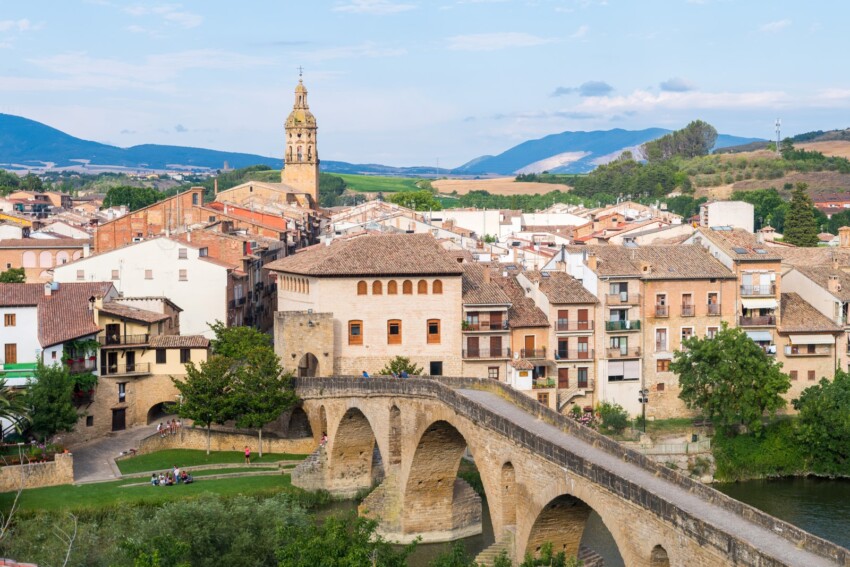
Another fundamental stop on the pilgrimage to Santiago de Compostela is Puente la Reina, a characteristic town dominated at its western end by a majestic medieval stone bridge with six arches. After an obligatory photo stop at the bridge, head into the maze of narrow streets in the town centre in search of the splendid late-Romanesque church Iglesia del Crucifijo.
Then leave the centre to admire one of the most beautiful chapels along the entire Camino de Santiago and the remains of an ancient Roman town. The centre awaits you on your return for a tasty dinner of local specialities.
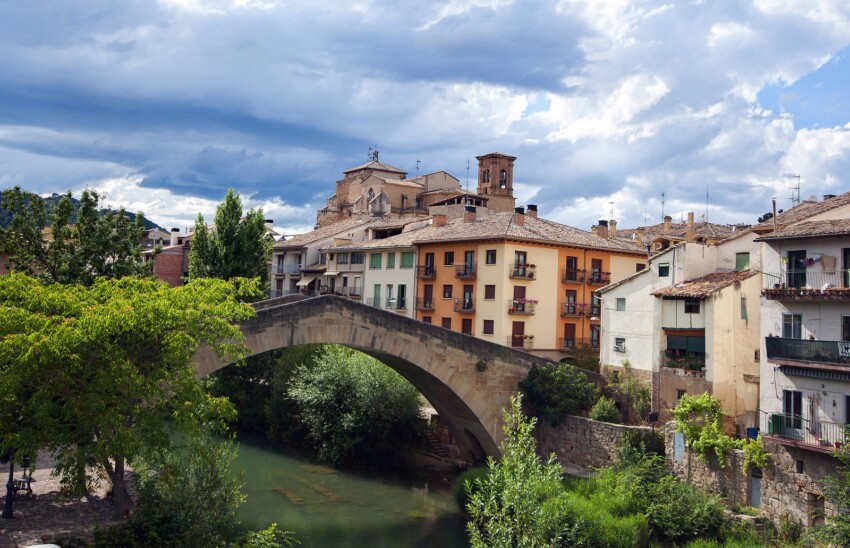
Known since the Middle Ages as Estella la Bella, this pretty town halfway between the capital of Navarre and the capital of La Rioja still holds its fame.
The historic centre is crossed by the river Ega and one of the most famous views of the town is from the Prison Bridge. Strolling through the centre you can admire Renaissance and Baroque buildings, centuries-old churches and lively city squares.
In the following map you can see the location of the main places of interest mentioned in this article.
Navarre occupies the north-eastern part of Spain. It is a rather remote area, but fortunately it is surrounded by several international airports that make it possible to get there within a few hours in a rented car. Consider, for example, landing in Bilbao, from which Pamplona is only a 1.45-hour drive, or Zaragoza, further south, for a slightly longer distance.
Navarre is not well connected with the rest of the country because it is quite isolated, so getting there by public transport may be longer and more inconvenient than expected.
The capital of Navarre, Pamplona, is also the city that lies practically in its geographical centre. It goes without saying that it is the number one choice for sleeping in this beautiful and unspoilt region. Pamplona is a city through and through, so you will find a wide choice of hotels, flats and bed and breakfasts, all services and amenities, and you will also be in the centre of Navarre’s motorway network: from here you can use the A-15 towards the Basque Country, the A-12 towards La Rioja and the A-21 towards Aragon.
If you are going to Navarre for a mountain holiday, enjoy chalets and hotels with spas: you are spoilt for choice. Finally, you can sleep in Roncesvalles. Yes, because in the tiny village made famous by Charlemagne there are no less than four establishments, very heterogeneous in both quality and cost.
Navarre is an autonomous community of Spain in the north-eastern part of the country. It borders France to the northeast and the Spanish regions of Aragon to the southeast, La Rioja to the southwest and the Basque Country to the northeast. It is landlocked.
The highest peak in the region is the Mesa de los Tres Reyes at a height of 2,428 metres. The climate is continental-oceanic in the north while in the south of the region it has more Mediterranean features.
Pamplona, the regional capital, is the only large city in Navarre, where around a third of the population is concentrated.
